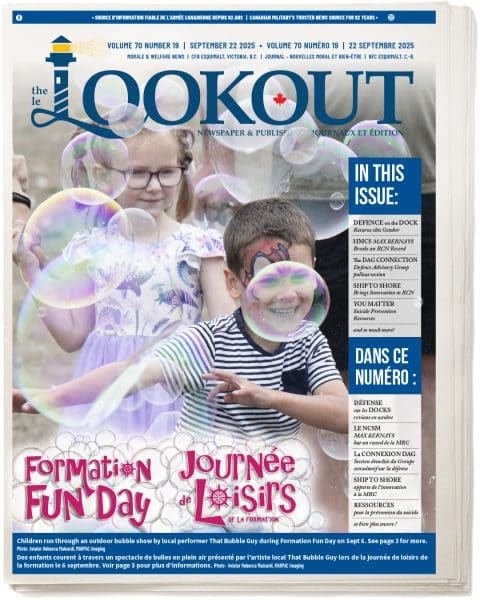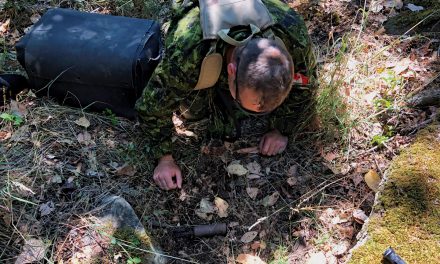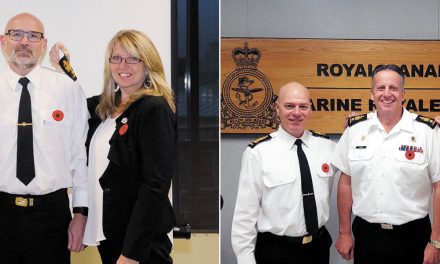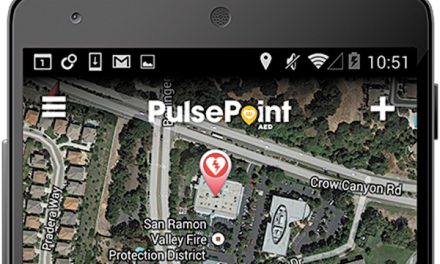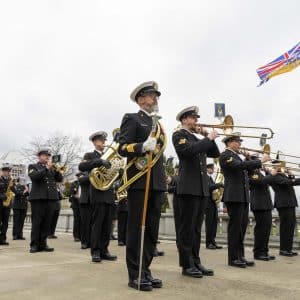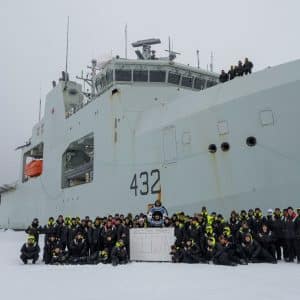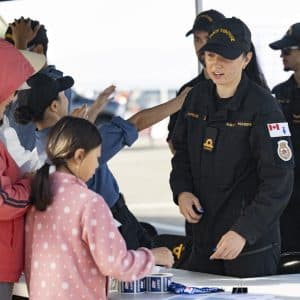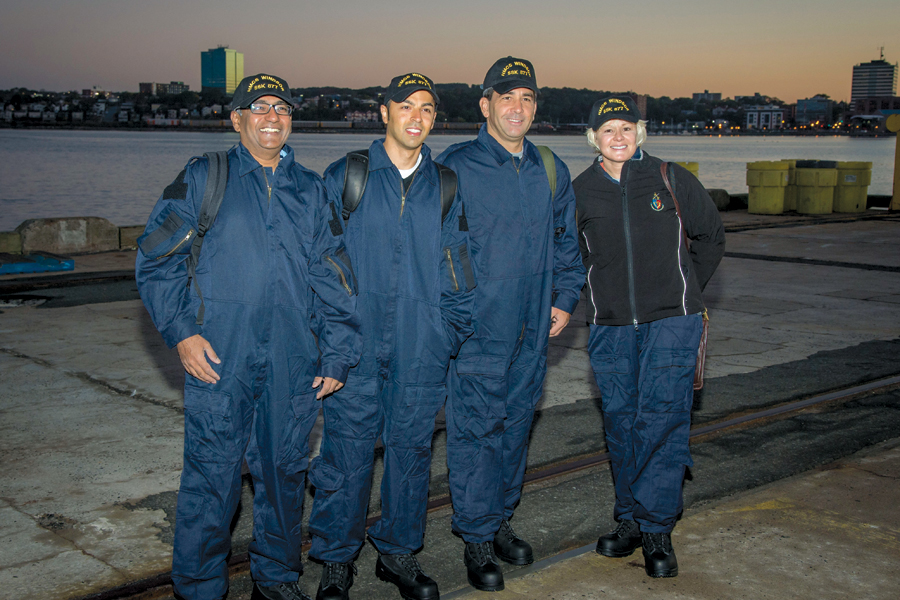
Members of Parliament Chandra Arya, Marwan Tabbara, Pierre Paul-Hus, and Cheryl Gallant suit up for their Canadian Leaders at Sea program at Canadian Forces Base Halifax on Oct. 11. Photo by MCpl Alexandre Pacquin
Ryan Melanson, Trident ~
A 24-hour adventure under the waves in HMCS Windsor, one of Canada’s four Victoria-class submarines, was the highlight of a visit to the East Coast by four parliamentarians from Oct. 12 to 13.
The politicians made the trip as part of the Royal Canadian Navy’s Canadian Leaders at Sea (CLaS) Program. For nearly a decade, CLaS has been embarking government officials, community and business leaders, and other strategic stakeholders on board HMC ships and submarines to showcase the skill sets and equipment the navy employs in defence of Canada.
Guests included Liberal Members of Parliament Marwan Tabbara and Chandra Arya, as well as opposition Members Pierre Paul-Hus and Cheryl Gallant, both of whom sit on the House Standing Committee on National Defence. They were accompanied by Rear-Admiral John Newton, Commander Maritime Forces Atlantic.
The submarine with embarked guests submerged more than 100 metres under water, and guests dined in the boat’s small messes alongside personnel, and slept on metal racks alongside submarine trainees and Mark 48 heavy torpedoes.
MPs also got a small taste of the slow-moving game of hide and seek that is submarine warfare, with Halifax-class frigate HMCS St. John’s and a CH-124 Sea King helicopter participating in a short exercise about 20 kilometres offshore.
Windsor closed within 2,000 yards of the warship at periscope depth, giving everyone a chance to observe the “adversaries” from the search periscope, before the participants took turns listening to St. John’s acoustic signature through the boat’s newly advanced AN/BQQ10 sonar, the same system employed by the newest submarines in the U.S. fleet.
Sitting at the fire control system, they then learned how visual, acoustic and other points of data are combined to accurately track nearby vessels and plot possible attacks.
As part of the simulation, Windsor fired off a green flare, a signal indicating a torpedo attack against St. John’s. There was no harm done, but in reality the boat’s torpedoes would have no issue breaking the back of a frigate.
“The torpedo will find and sink whatever is out there, guaranteed. It’s been proven time and time again,” said Lieutenant-Commander Peter Chu, Windsor’s Commanding Officer.
Later, the visitors witnessed the crew run through a comprehensive set of pre-diving checks before plunging below into their natural hidden state below the waves.
“It becomes incredibly calm,” observed Marwan Tabbara while the submarine was submerged, compared to the way Windsor rolls with the waves at periscope depth.
It’s one of the many reasons submariners prefer to stealthily submerge as much as possible, though the boat did surface again in the evening so their guests could experience a “snort”, drawing in air and recharging the battery while running the diesel engines.
Before leaving the boat to continue their tour of CFB Halifax sites, each visitor was presented with an Honorary Submariner card, an HMCS Windsor coin, and even a dolphin badge like the ones worn by submariners around the world.
“I really encourage them all to carry these with pride and to show them off whenever they can,” LCdr Chu said. “It’s an experience they’ll remember for the rest of their lives, no doubt.”
The parliamentarians’ time at CFB Halifax also included a number of other stops to help illustrate the full picture of Maritime Forces Atlantic. These included glimpses into the navy’s future, such as a static tour of the CH-148 Cyclone helicopter at 12 Wing Shearwater, N.S., as well as a walkthrough of Irving Shipbuilding’s Halifax Shipyard where work on the first Arctic Offshore Patrol Vessel is well under way.
